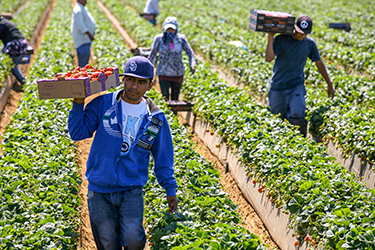Public health professionals are identifying and addressing the specific needs in rural communities, including transportation access, teen pregnancy and COVID-19 pandemic disparities. Panelists at the APHA 2022 session “Strategies to Promote Rural Health Equity” demonstrated the ways they have reached out to improve health in rural areas by putting the needs of rural communities first.
Quaboag Valley, Massachusetts
Jen Healy, rural transit program manager for the Quaboag Valley Community Development Corporation, shared one way the nonprofit addressed transportation issues in Massachusetts’ Quaboag Valley.
Healy and her team launched the Quaboag Connector, an on-demand transportation service for local residents, in 2017. Transportation is a social determinant of health, she said, particularly for older adults and people with disabilities. Across all ages and demographics, 60% of riders used the Connector to travel to work, she said.
“We love to see that so many people use the Quaboag Connector to get to work or to job interviews,” she said. “Steady employment is definitely a big social determinant of health.”
San Joaquin Valley, California
Rosa Manzo and Marisela Yepez, along with their research team from the University of California-Merced, worked with the rural and largely Hispanic community in the San Joaquin Valley by training promotoras de salud (promoters of health) to reach out to their communities and get people engaged. The promotoras educated the community about pollution and interviewed residents who had asthma. 
Yepez said distributing health education and promotion materials can be challenging, particularly in rural communities where many residents face unique challenges associated with poverty, language barriers, acculturation and immigration status.
“The goal was for (medical) students to identify some of the other issues their patients, or the community in general, were in need of,” Yepez said. “Their goal was to become knowledgeable about the community’s cultural, social and economic structures and how these impact health outcomes.”
Clinton County, Indiana
Leigh Zaban and Abby Hunt, with Health Care Education and Training, worked in Clinton County, Indiana, with the goal to reduce teen pregnancies.
While HCET doesn’t provide any direct service, “we train the trainers and help the helpers,” Zaban said.
In 2015, HCET was awarded federal funds to support the implementation of three evidence-based teen pregnancy prevention programs in Clinton County, which had one of the highest rates of teen pregnancies in the U.S. Zaban said prior to the programming, the teen birth rate in the county was 46.2 per 1,000 people. By 2019, that rate had dropped to 23.3 per 1,000.
Zaban and her team had to adapt the evidence-based programming to the needs and social climate of the county, where residents self-identified as religious, conservative and rural.
“Our use of local data was key to framing teen pregnancy as a public health issue rather than a social issue,” Zaban said.
Anne Gaglioti, an associate professor at Case Western Reserve University, worked with the National COVID-19 Resiliency Network to research whether the availability of the COVID-19 vaccine reduced disparities in COVID-19 infections and deaths.
Gaglioti said early in the pandemic, rural areas with higher proportions of Black and Hispanic populations had higher COVID-19 death rates than in predominantly white areas. The communities with larger Black and Hispanic populations also tended to have higher rates of poverty, higher unemployment, fewer people insured, higher social vulnerability and less access to primary care.
Once the vaccine became available to all adults in April 2021, Gaglioti noticed a reduction in the disparity in COVID-19 death rates between Black and Hispanic populations and white populations.
By Photo Beto, iStockphoto.